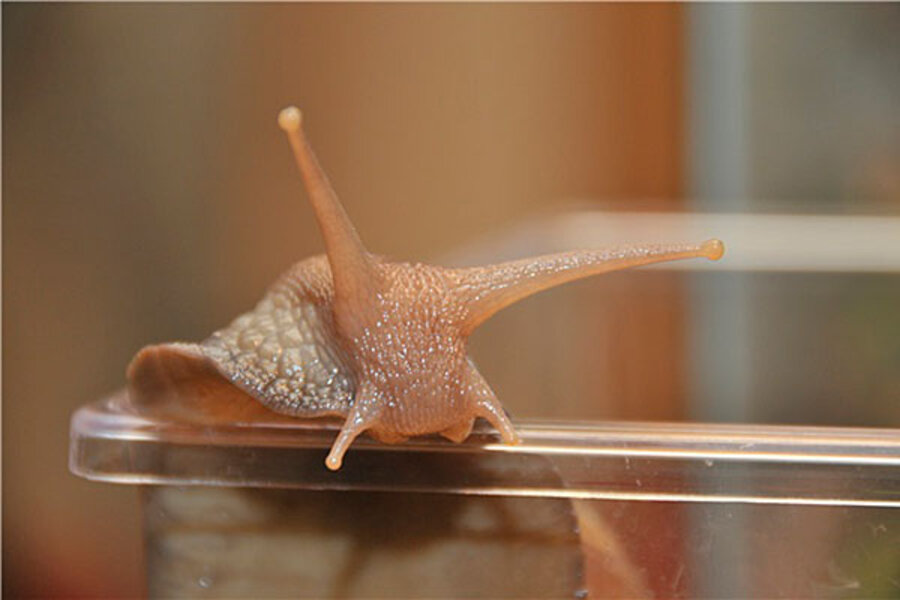Giant snail invasion forces Floridians to walk for their lives
Loading...
As big as a rat and with a taste for building materials, the African giant land snail is proving to be a slow-moving disaster for the Sunshine State.
Originally from Kenya and Tanzania, the gigantic gastropod is a notorious invasive species, having already established itself throughout Africa, China, India, many Pacific islands, the Caribbean, and Hawaii. The first reported sighting came in September 2011, and since then, according to Reuters, officials in Miami-Dade have caught some 117,000 snails, at a rate of about 1,000 per week.
That rate, which gives a new definition to the term "snail's pace," is likely to increase in the coming weeks, as the state's rainy season begins and the snails emerge from underground hibernation.
In addition to dining on a wide range of plants – more than 500 varieties, according to the Florida Department of Agriculture and Consumer Services – the massive mollusks also gnaw through stucco, plaster, and even concrete, which contain calcium that the snails need to grow their shells.
The snails can also harbor a parasitic lungworm thought to be dangerous to humans, although no there have been no reported cases in the United States of humans being infected by the snails.
This is not the first time the giant snails have attempted to establish themselves in Florida. As Reuters notes, in 1966 a boy returning from vacation in Hawaii brought three of them to Miami. The state spent 10 years and $1 million eradicating them.
How they arrived this time is anybody's guess. Officials are investigating the Miami Santeria group, which three years ago was found to be using the snails in their rituals. But they could have just as easily arrived unintentionally in freight or luggage from destinations where the snail is endemic.
So if you're in the mainland United States and you spot something that looks like a snail, only humongous, be sure to contact authorities.
And if they let you keep it, then you just might have found dinner. In 2009, the Guardian's Tim Hayward described how to cook them. (Because of the lungworms, the University of Hawaii recommends heating snails to an internal temperature of 165 degrees before eating.)
Hayward described his meal – the ultimate slow food – as " totally new combination of flavour and texture."






